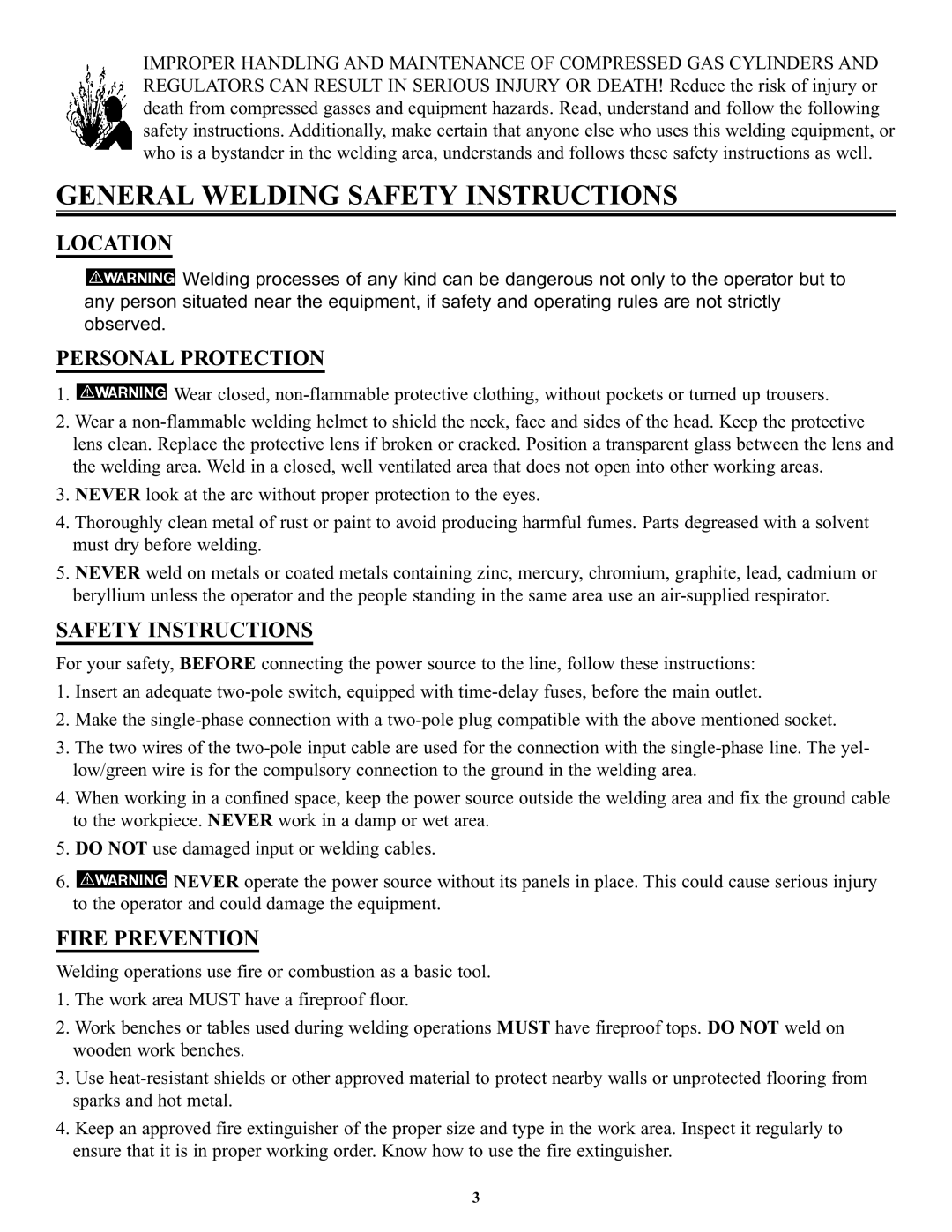
IMPROPER HANDLING AND MAINTENANCE OF COMPRESSED GAS CYLINDERS AND REGULATORS CAN RESULT IN SERIOUS INJURY OR DEATH! Reduce the risk of injury or death from compressed gasses and equipment hazards. Read, understand and follow the following safety instructions. Additionally, make certain that anyone else who uses this welding equipment, or who is a bystander in the welding area, understands and follows these safety instructions as well.
GENERAL WELDING SAFETY INSTRUCTIONS
LOCATION
![]() Welding processes of any kind can be dangerous not only to the operator but to any person situated near the equipment, if safety and operating rules are not strictly observed.
Welding processes of any kind can be dangerous not only to the operator but to any person situated near the equipment, if safety and operating rules are not strictly observed.
PERSONAL PROTECTION
1. ![]() Wear closed,
Wear closed,
2.Wear a
3.NEVER look at the arc without proper protection to the eyes.
4.Thoroughly clean metal of rust or paint to avoid producing harmful fumes. Parts degreased with a solvent must dry before welding.
5.NEVER weld on metals or coated metals containing zinc, mercury, chromium, graphite, lead, cadmium or beryllium unless the operator and the people standing in the same area use an
SAFETY INSTRUCTIONS
For your safety, BEFORE connecting the power source to the line, follow these instructions:
1.Insert an adequate
2.Make the
3.The two wires of the
4.When working in a confined space, keep the power source outside the welding area and fix the ground cable to the workpiece. NEVER work in a damp or wet area.
5.DO NOT use damaged input or welding cables.
6. ![]() NEVER operate the power source without its panels in place. This could cause serious injury to the operator and could damage the equipment.
NEVER operate the power source without its panels in place. This could cause serious injury to the operator and could damage the equipment.
FIRE PREVENTION
Welding operations use fire or combustion as a basic tool.
1.The work area MUST have a fireproof floor.
2.Work benches or tables used during welding operations MUST have fireproof tops. DO NOT weld on wooden work benches.
3.Use
4.Keep an approved fire extinguisher of the proper size and type in the work area. Inspect it regularly to ensure that it is in proper working order. Know how to use the fire extinguisher.
3
